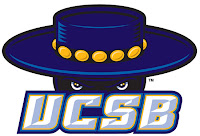-- by @Josh_Suchon
There’s too many
bowl games. We know that. We’ve known that for a long time.
Thirty years
ago, in 1982, the NCAA sanctioned 16 bowl games.
In 2012, the
NCAA sanctioned 35 bowl games.
There’s 124
total Division I football teams. That means 56 percent of college football
teams made a bowl game.
In order to be
eligible, you must win six games. It doesn’t matter who those six wins come
against. It used to be, you needed six wins against Division I opponents (ie. not
against Division I-AA or Division II). These days, all that matters is you
schedule a university that puts a bunch of dudes in uniforms, and it counts
toward becoming bowl eligible.
So which bowls
should go?
Let’s start with
the obvious bowls that should stay: the BCS Championship, the Rose Bowl, the
Orange Bowl, the Fiesta Bowl, the Sugar Bowl, the Cotton Bowl, the Outback Bowl
(in Tampa), the Capital One Bowl (in Orlando), the Gator Bowl, the Chick-Fil-A
Bowl (in Atlanta), the Alamo Bowl, and the Holiday Bowl.
That’s 12 bowls
that I think everybody would agree should remain. All those bowls have at least
one Top 25 ranked team, and most have two.
That gives us 23 remaining bowls. Let’s start knocking down some bowls:








